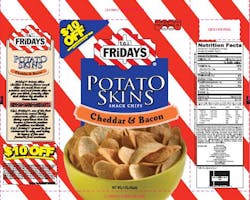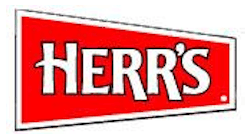What happened to large size snacks?
The higher prices of large serving size (LSS) vend products were supposed to provide vending operators with higher profits. However, the recession, and perhaps the selection constraints and payment options of vending machines, caused an overall reluctance in consumers to buy LSS, equating too fewer turns for operators. LSS salted snacks are faring better than LSS candy, but lower priced, alternative items make more sense for operators.
Vending operators can escape the restraints of the vending machine, noted earlier, by introducing cashless payment options and/or using self checkout micro markets to gain product display real estate. Self checkout micro markets allow operators to show the comparative values of regular size servings (RSS) verse LSS products, similar to convenience stores, where the LSS product category is growing.
LSS drops in vending
Data shows LSS products have been steadily declining after a brief surge. According to Management Science Associates (MSA), a diversified information management company, from 2009 to 2011, the LSS candy offered in vending machines nationwide has dropped 8 percent, and LSS snacks have dropped 4 percent.
"(Product) prices continue to increase," said Matt Groff, account director at MSA. "Now (RSS) prices commonly break a $1 and (LSS) prices are closer to $1.50. This has curtailed the growth of (LSS) in vend."
Groff noted that in many instances large size products turn less frequently in vending, so they don't warrant the machine space. "Vending operators prefer lower margin products that turn at higher rates," explained Groff. "It leaves them less exposed to expensive inventory costs, such as stales."
The downward trend in LSS vends runs contrary to the convenience store data from MSA, which shows an increase in LSS in both store units and volume, for the past several years. While the rate in 2011 slowed, it was still a gain. Groff believes value is playing a role in c-stores, where consumers can see the large size next to the standard size. They choose the larger size for its value.
Dollar no longer a hurtle
It used to be that any vending product priced at a $1 wouldn't sell. MSA vending data shows there's a price threshold, however, it's not the $1 anymore, it’s the $1 plus, especially for candy products. More and more operators are charging a $1 for even standard size candy, according to Groff. "(RSS chocolate) is more than a $1 in more than half of the vending machines we sampled," said Groff.
Groff views these higher prices as necessary so operators can cover manufacturer price increases over the last few years. "It (the higher price point) isn't translating to higher margins for operators," he said.
Eliot Faber, owner of M&C vending in the heavily vending saturated market of Hackensack, N.J. has eliminated most of his LSS products, because anything over a dollar doesn't sell.
"Money is tight for everyone," he said, "and vending is discretionary spending."
He tried upselling, with premium protein bars, but the $1.75 price point never took off. He has had more success with premium items that sell for the same price as the other products in his machine.
The winning strategy for Faber, in these economic times, is flexibility. "We're more open to suggestions than we've ever been before," he said. He thinks a lot about the type of account now, putting fiber bars in accounts with lots of females, but changing to something else in heavily Spanish accounts. "If a vendor's using the same plan-o-gram, they're missing out," Faber said.
Faber doesn't think he'll ever go back to larger sized products. "If I raise my prices even a nickel, the locations are on the phone with other vendors, and vice versa."
LSS candy too expensive
"We just eliminated our LSS candy," said Devin Smith, purchasing manager at All Star Services in Port Huron, Mich. "A lot of times the price was too high. Anything over a $1 has dropped off." However, All Star Services still puts in candy, the vend size, and charges a dollar for it. That has helped them capture new sales.
"Everybody's looking for a deal these days," said Smith.
The consumer wants to spend less at the machine, so will buy a smaller product. Smith sees companies "weighing out" bags, dropping the product weight in the package, but charging the same. "It's like a price increase," he explained, although it doesn't affect sales as much. "We're doing the same with vend size candy," he said.
Smith doesn't see the elimination of LSS snacks, however, because snacks are often cheaper for the operator to purchase. In many machines, Smith notes a LSS snack will cost the same as a vend size candy.
Candy still strong, but smaller
Don Lear, senior marketing manager, vending/fundraising for Hershey Co. has seen steady candy sales in the vending channel, however, there is some downsizing going on.
"When prices increase, some vending operators choose to switch from LSC (large size candy) to standard bars, offsetting the price increase by offering a standard size bar at the LSC price," explained Lear. "This can result in volume reductions." At the same time, Lear sees other operators successfully increasing candy sizes, offering peg bags at B&I accounts that have cashless payment systems.
Cashless has many associated costs, best left to other articles, but there is evidence to support not only cashless resulting in increased sales, but that consumers are less concerned about the $1 price point when using their credit or debit card.
Lear has also noticed larger candy doing well in convenience stores. While c-stores don't sell Hershey LSC (it is exclusive to vending) they do sell the king size, which is larger than Hershey LSC with a higher price point. Lear said, "According to Nielsen (52 weeks ending 1/28/12), king size bars have gained 8.0 share points from standard bars." And both bars are experiencing growth. "King is growing 12.9 percent and standard growing 3.8 percent," he said.
While Lear couldn’t explain why the larger candy was doing better in c-stores, he attributed it to how the channels operate. Vending machines are limited on space, and therefore, which and how many products are offered. "…Vending operators should consider offering both LSC and standard bar products in machines," he said. Also, he noted most operators can't offer special deals or display promotions that might include higher prices items, which other retail channels are able to do.
Some LSS snacks thrive
LSS snacks have declined much more slowly, with many varieties still experiencing great success. Craig, Harkins, sales director vend/foodservice and specialty markets, Inventure Foods, Inc., has seen growth in LSS of the TGIFriday's potato skins cheddar and bacon snack. The company offers it in both an RSS and LSS.
The success of a product has a lot to do with how unique it is, according to Harkins. The TGIFriday's potato skins, for instance, includes a coupon right on the bag for $10 off a meal at the restaurant.
In addition to upselling with higher priced items, Harkins suggests operators try a new price point for smaller products. This would spur interest and sales volume. "It is not as easy as it sounds to raise the price to the same audience on the same products in a highly competitive industry," he said. "Changing the mix, changing the offering, attracts new consumers, and you're more likely -- in a bit more subtle way -- to upsell."
Single/multi-form LSS makes a difference
Mark Kelley, regional sales manager for vending at General Mills, considers LSS still emerging. General Mills started making larger sized products for vending 12 year ago and has seen increases. "It's trending well, but we do still see a lot of volume on the standard size," said Kelley.
One challenge in vending is consumer perception of the salted snack sizes, and therefore their value. There are single form products where the entire bag is the same snack. These tend to look bigger, or fuller. Multi-form products, where multiple kinds of snacks are in one package, are denser. According to Kelley, this creates a pricing dilemma because the same weight multi-form package looks smaller to consumers than a single form product. When they are the same price and the consumer is buying on value, the single form product will do better. "Size to value ratio is often questioned," said Kelley.
Additionally, breaking the pricing paradigm is difficult in certain regions. "In the Midwest, the $1 (price point) is a big deal," said Kelley, "In the West coast, the $1 isn't as big."
Kelley also thinks operators sometimes miss out on products that would get them higher profits, because they have preconceived product standards. "We're told, the product has to be this price, this size, branded X, etc." he said. "So we don't always bring the best product we have to the market."
To stimulate sales, and higher prices, Kelley recommends finding new products popular in retail, even if they are priced above the vending realm. "Consumers will buy it no matter the price," he said. Other high priced products can then follow that breakthrough product.
The most encouraging trend Kelley sees in upselling is the self checkout micro markets. "It's encouraging because a product can be priced based on its own merit," he said.
Upselling with self checkout micro markets
Self checkout micro markets are a new alternative to vending banks that have some real potential for upselling.
"The trend now is people asking for bigger bags for micro markets," said Joe Kuehner, vice president of distributors and brokers for Herrs. Kuehner's experience at trade show break out sessions and talks with vending operators leads him to believe this is the future, due to cheaper upfront equipment and routine maintenance costs, compared to vending banks. To meet this future demand, Herrs is coming out with a new size product, large value line, which is bigger than the LSS and RSS.
"The bigger product will have a higher price point," said Kuehner, "resulting in a higher penny profit." Kuehner used an example of selling a bag of chips for $.50 versus $1.29. At a 10 percent profit margin for both, the penny profit is $.05 for the former, and $.13 for the latter. That's the benefit of self checkout micro markets, higher prices and no pricing blocks.
While the self checkout micro market business grows, Kuehner is still seeing an increase in LSS business, although the RSS size is more common in the vending channel. "There's more variety in RSS" Kuehner said, "but the new items coming out are planned for LSS sizes."
The recession has again made consumers conscious of the $1 price point. They want value more than ever, which has lead to the decline of LSS snacks, in the vending channel at least. Instead of LSS products, operators could use higher quality products to gain higher price points or alternative, cheaper products to drive turns. Changing equipment, in the right environments, such as installing cashless readers or self checkout micro markets, can also both drive sales and profits.
For more information, contact
General Mills
Herrs's
Hershey Co.
Inventure Foods Inc.
MSA
Wellness movement didn't force LSS decline
Offering large service size (LSS) products in the vending machine seems contrary when locations are asking for healthier products, because wellness is associated with smaller size candy and snack packages. However, if wellness is contributing to the decline in LSS products, it's only in a small way. Price was the reason most operators gave for the decline in LSS.
Wellness may actually help operator's upsell, since many healthier items can be priced at a higher price point. As long as customers at the location are willing to pay those higher prices, this could help operators raise prices over time.
Finally, wellness is not an issue to upselling, or even vending, because even health conscious people will occasionally treat themselves to a candy or snack.

Emily Refermat
Emily began covering the vending industry in 2006 and became editor of Automatic Merchandiser in 2012. Usually, Emily tries the new salted snack in the vending machine, unless she’s on deadline — then it’s a Snickers.
Emily resigned from Automatic Merchandiser and VendingMarketWatch.com in 2019 to pursue other opportunities.







